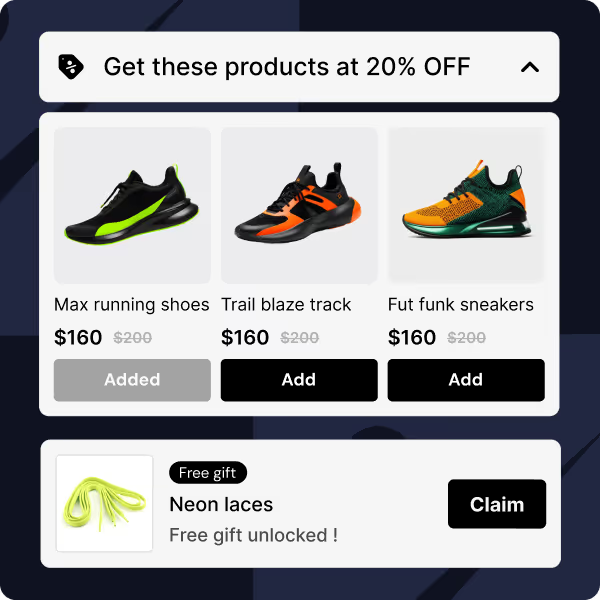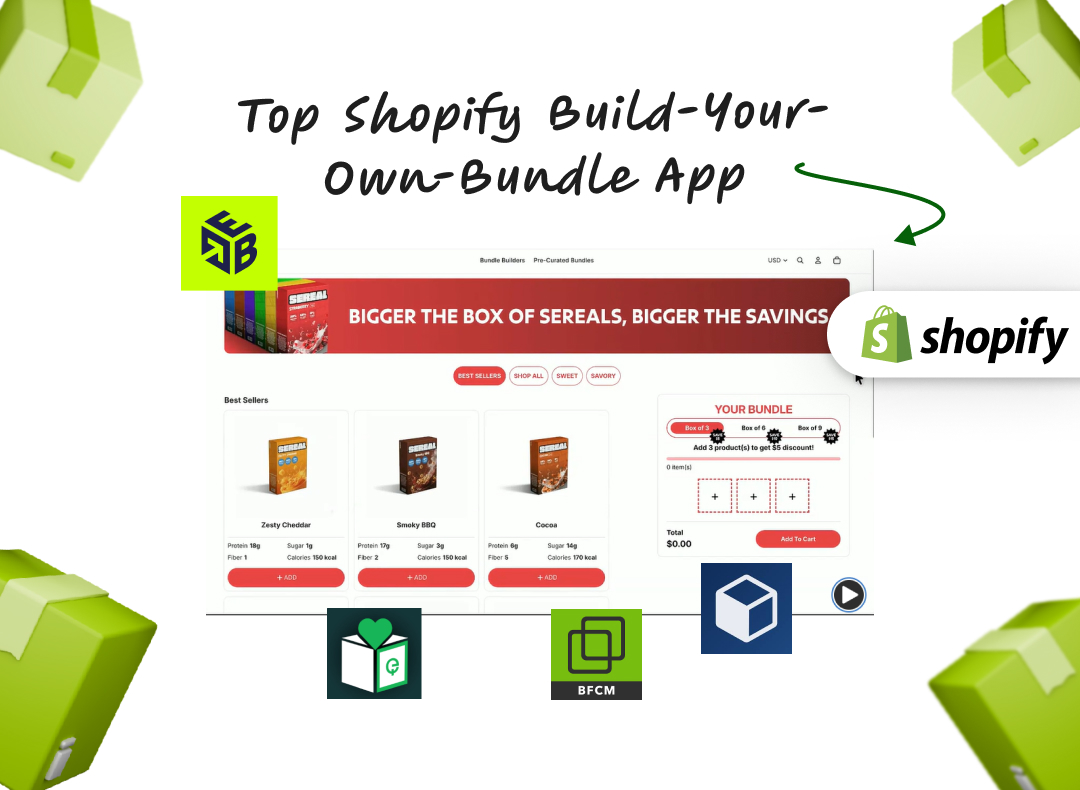Introduction
The UK eCommerce market continues to thrive in 2025, with online sales expected to surpass £150 billion this year. From sustainable fashion to smart home devices, consumers are more connected, conscious, and convenience-driven than ever before. As the competition among online sellers intensifies, identifying trending and high-demand products has become essential for success.
Selecting the right product isn’t just about following a fad — it’s about understanding shifts in consumer behavior and technology adoption. Platforms like Shopify, Amazon, and Etsy have made it easier for UK entrepreneurs to start their own online businesses, but the true differentiator lies in how sellers analyze trends and optimize conversions. This is where tools like SkaiLama apps come in — helping merchants track product performance, automate marketing, and boost on-site conversions without complex setups.
Whether you’re a new dropshipper, a print-on-demand seller, or running a branded store, the key to success in 2025 is staying ahead of the curve. In this guide, we’ll explore the top trending products to sell online in the UK, backed by current data, consumer insights, and strategies powered by SkaiLama apps to help your store grow faster.
Why Product Trend Research Matters
Selling online in 2025 is no longer about simply listing products — it’s about understanding what people buy, why they buy it, and when demand peaks. In the UK, consumer preferences shift faster than ever due to viral social media trends, sustainability movements, and rapid technological innovation. Successful eCommerce brands stay ahead by continuously monitoring these shifts through data-driven tools and adapting their product mix accordingly.
Trend research helps identify products with consistent long-term potential rather than short-lived hype. For instance, while fidget spinners had their moment years ago, categories like clean beauty, eco-friendly homeware, and smart home tech continue to show sustainable growth. Sellers who invest time in market validation can optimize inventory, pricing, and marketing — ultimately improving profitability.
Tools such as Google Trends, eBay UK Seller Hub, and Shopify’s trending data provide insights into emerging categories. Combining these with automation tools like SkaiLama apps enables merchants to simplify the process — from finding profitable niches to automating marketing campaigns that convert. By aligning product discovery with real consumer data, businesses can scale smarter, reduce ad spend, and build lasting customer loyalty.
In the next section, we’ll explore the most promising and top trending products to sell online in the UK in 2025, across key niches like beauty, tech, fashion, and sustainability.
Top Trending Products to Sell Online in the UK (2025)
The UK eCommerce ecosystem is expanding rapidly, projected to cross £150 billion in online sales by 2025. Consumers are investing in products that improve lifestyle quality, promote sustainability, and integrate technology. Platforms like Shopify and Amazon UK continue to highlight these categories as top performers, while SkaiLama apps empower store owners to identify, analyze, and optimize trending product opportunities faster.
Health and Beauty
The health and beauty segment dominates UK eCommerce, fuelled by clean beauty trends, self-care culture, and influencer-driven awareness.
| Product Category |
Top Products |
Projected Growth Rate (CAGR 2024–2028) |
| Skincare |
Organic serums, acne patches, vitamin C creams |
6.5% |
| Haircare |
Sulfate-free shampoos, hair oils, conditioners |
5.8% |
| Supplements |
Whey protein, collagen powders, immunity tablets |
8.1% |
| Cosmetics & Fragrance |
Lipsticks, perfumes, cruelty-free makeup kits |
5.2% |
Insight: Beauty products with sustainable packaging and local sourcing are outperforming traditional mass-market goods. Using SkaiLama apps, sellers can analyze conversion data to determine which beauty products yield the highest repeat purchase rates.
Electronics and Accessories
With remote work, content creation, and mobile-first lifestyles continuing to grow, electronics and accessories remain one of the most profitable eCommerce niches in the UK.
| Product Category |
Top Products |
Projected Growth Rate (CAGR 2024–2028) |
| Audio Devices |
Wireless earbuds, Bluetooth speakers |
7.4% |
| Smart Gadgets |
Smart home cameras, plugs, and thermostats |
9.2% |
| Phone Accessories |
USB-C hubs, chargers, phone stands |
6.8% |
| Laptop Accessories |
Adjustable stands, webcams, LED lights |
5.9% |
Insight: Product bundling (e.g., charger + stand) and strong reviews drive high conversion rates. SkaiLama apps can automate product pairing and upselling strategies to boost AOV (Average Order Value).
Sustainable and Eco-Friendly Products
Eco-conscious buying is one of the biggest UK retail shifts. Consumers increasingly prefer biodegradable, reusable, and ethically sourced items.
| Product Category |
Top Products |
Projected Growth Rate (CAGR 2024–2028) |
| Eco Personal Care |
Bamboo toothbrushes, shampoo bars |
9.5% |
| Sustainable Fashion |
Recycled fabric t-shirts, organic cotton wear |
10.2% |
| Refillable Products |
Skincare and cleaning refill kits |
8.3% |
| Vintage Clothing |
Thrifted and second-hand apparel |
7.1% |
Insight: Sellers promoting authenticity and carbon-neutral shipping see higher retention. This segment offers great storytelling potential — a feature SkaiLama apps can help optimize through smart product page content automation.
Apparel and Accessories
The UK fashion market thrives on personalization and comfort, with strong growth in streetwear, athleisure, and custom products.
| Product Category |
Top Products |
Projected Growth Rate (CAGR 2024–2028) |
| Streetwear |
Oversized t-shirts, hoodies, joggers |
5.5% |
| Custom Apparel |
Print-on-demand t-shirts, embroidered polos |
6.9% |
| Activewear |
Gym leggings, sports bras, sneakers |
7.6% |
| Accessories |
Hats, bags, minimal jewelry |
5.3% |
Insight: TikTok and Instagram trends strongly influence UK youth fashion. Print-on-demand integrations and personalization can significantly enhance revenue margins.
Home and Kitchen
Functional, aesthetic, and wellness-driven home and kitchen products are seeing steady adoption across the UK.
| Product Category |
Top Products |
Projected Growth Rate (CAGR 2024–2028) |
| Drinkware |
Insulated tumblers, coffee mugs |
6.1% |
| Kitchen Gadgets |
Smart scales, mini blenders, air fryers |
7.0% |
| Coffee Niche |
Mushroom coffee, syrups, reusable pods |
8.7% |
| Home Essentials |
Reusable storage, cleaning tools |
5.9% |
Insight: The “homebody economy” continues to rise — products that merge function with lifestyle (like aesthetic kitchen tools) are strong performers.
Pet Supplies
The pet economy in the UK continues its steady expansion, driven by growing “pet parenting” trends and premiumization of everyday pet goods.
| Product Category |
Top Products |
Projected Growth Rate (CAGR 2024–2028) |
| Pet Grooming |
Brushes, shampoo, nail trimmers |
6.8% |
| Pet Toys |
Interactive cat and dog toys |
7.2% |
| Accessories |
Collars, harnesses, smart feeders |
8.0% |
| Essentials |
Cat litter, feeding bowls |
5.6% |
Insight: Subscription models and repeat-purchase consumables (like litter or food) provide recurring revenue potential.
Craft and Hobby Supplies
DIY culture and side hustles have created renewed demand for arts and crafts materials online.
| Product Category |
Top Products |
Projected Growth Rate (CAGR 2024–2028) |
| Jewelry Making |
Beads, chains, tools |
5.4% |
| Art Supplies |
Paints, sketch pads, markers |
6.2% |
| DIY Kits |
Candle-making, embroidery, soap kits |
7.5% |
| Custom Gifts |
Handmade décor, personalized crafts |
8.1% |
Insight: Craft sellers benefit from personalization trends and seasonal demand (Christmas, Mother’s Day, etc.).
Car and Vehicle Accessories
Automotive accessories remain a consistent eCommerce performer in the UK, especially with rising electric vehicle adoption.
| Product Category |
Top Products |
Projected Growth Rate (CAGR 2024–2028) |
| Maintenance Tools |
Jump starters, tire inflators |
4.9% |
| Cleaning Gear |
Car vacuums, microfiber kits |
5.6% |
| Smart Accessories |
Dash cams, phone mounts |
7.3% |
| Interior Organizers |
Seat back storage, boot organizers |
5.1% |
Insight: Sellers combining practicality with style — such as minimalist storage kits — are seeing higher engagement and conversion rates.
Bonus: Digital Products Gaining Popularity in the UK
While physical products dominate the eCommerce landscape, digital products are becoming increasingly profitable for UK entrepreneurs in 2025. They require no inventory, have high margins, and can scale globally. With the rise of content creators, online educators, and freelancers, digital commerce is expanding faster than ever.
| Product Category |
Top Products |
Projected Growth Rate (CAGR 2024–2028) |
| Printables |
Planners, calendars, wall art templates |
8.9% |
| Digital Courses |
Skill-based training, certification programs |
10.5% |
| eBooks |
Self-improvement, finance, and wellness guides |
7.2% |
| Design Assets |
Canva templates, icons, mockups |
9.1% |
Insight: The UK’s creator economy is booming, driven by demand for side hustles and passive income. Sellers leveraging tools like Shopify’s digital delivery and marketing automation via SkaiLama apps can easily build scalable digital storefronts that generate consistent revenue with minimal overhead.
Digital products are particularly attractive for new sellers due to:
- Zero logistics or storage costs
- Instant delivery and global reach
- Flexible customization for different audiences
- Recurring sales opportunities through updates or memberships
Creators in niches like wellness, productivity, or education can integrate SkaiLama apps to automate sales funnels, email workflows, and personalized product recommendations — turning a simple digital store into a fully automated revenue engine.
Shopify and Amazon Product Trends: Quick Comparison
Both Shopify and Amazon UK dominate the online retail market but appeal to different seller profiles. Amazon caters to volume-driven sellers who want instant visibility, while Shopify empowers entrepreneurs to build brand-controlled experiences with long-term scalability. Understanding where your product fits best can help you choose the right platform — or use both strategically.
| Platform |
Popular Product Categories (UK 2025) |
Best-Selling Product Examples |
Growth Trend (2024–2028) |
| Shopify |
Apparel, sustainable goods, digital products |
Custom T-shirts, organic skincare, online courses |
↑ Growing (8.2%) |
| Amazon UK |
Home & kitchen, beauty, electronics |
Smart home gadgets, insulated tumblers, cosmetics |
↑ Consistent (6.4%) |
| Etsy UK |
Handmade, vintage, and personalized goods |
Jewelry, crafts, digital prints |
↑ Growing (7.9%) |
| eBay UK |
Fashion, auto parts, collectibles |
Vintage clothing, car accessories, refurbished electronics |
→ Stable (4.5%) |
Insight: Shopify sellers gain more control over branding, pricing, and marketing — making it ideal for building a sustainable, long-term brand. Amazon, on the other hand, is perfect for sellers focusing on quick-moving, mass-market items.
To get the best of both worlds, sellers can use SkaiLama apps to track product performance across multiple platforms. From synchronizing listings to monitoring category-level analytics, SkaiLama provides insights that help UK sellers make smarter, data-backed decisions.
Using these insights, you can:
- Identify which categories are trending faster on Shopify vs Amazon.
- Optimize ad spend based on platform-specific conversion rates.
- Streamline customer data collection and remarketing automation.
How to Pick the Right Product for Your Store
Choosing the right product is the foundation of every successful online business. In a competitive UK market, it’s not enough to chase what’s “trending” — you need to validate demand, assess profitability, and ensure long-term scalability. The right strategy combines market data, audience insights, and efficient operations.
Here’s a practical framework UK sellers can use:
| Step |
Key Focus Area |
What to Do |
Tools / Examples |
| 1. Identify Market Demand |
Search & consumer interest |
Use Google Trends, TikTok hashtags, and Amazon UK Best Sellers to find rising demand |
Search “sustainable skincare UK” or “eco-friendly coffee mugs” |
| 2. Validate Competition |
Check saturation & pricing |
Analyze similar products on Shopify stores and eBay listings |
Compare pricing models & reviews |
| 3. Analyze Profit Margins |
Estimate costs & ROI |
Use spreadsheets or automation tools to calculate costs and fees |
Aim for 40–60% gross margin |
| 4. Consider Fulfilment |
Ease of delivery & returns |
Choose lightweight, low-damage items for smoother logistics |
Products under 2 kg work best |
| 5. Test and Iterate |
Launch small batches |
Use A/B testing and collect customer feedback |
Test different bundles or offers |
Insight: UK consumers value trust and product authenticity. Launching with verified suppliers, clear return policies, and strong visual branding improves conversion rates significantly.
SkaiLama apps can make this process easier by automating trend tracking, price comparison, and performance analytics across different platforms. Merchants can use built-in reports to see which categories — such as sustainable apparel or tech accessories — show upward conversion trends before committing large budgets.
Pro Tip: Start with 1–2 micro-niches rather than a broad range of products. Once you identify a strong performer, expand horizontally with complementary products (for example, pairing eco-friendly tumblers with reusable cutlery or tote bags).
By focusing on verified demand and data-backed decisions, you can avoid overstocking, improve ad ROI, and build a store that scales with minimal risk.
Pricing Expectations and Profit Margins
Understanding your pricing strategy and profit margins is essential for sustainable growth. In the UK market, pricing varies by niche, supplier source, and fulfillment model (dropshipping, private label, or in-house inventory). Sellers who calculate accurate profit margins early can scale confidently and reinvest in marketing, automation, and inventory.
Below is a breakdown of average product costs, selling prices, and expected profit margins across the top UK eCommerce categories for 2025.
| Category |
Average Product Cost (GBP) |
Average Selling Price (GBP) |
Expected Profit Margin |
| Health & Beauty |
£5–£10 |
£15–£25 |
40–60% |
| Tech Accessories |
£8–£15 |
£25–£40 |
50–65% |
| Sustainable Fashion |
£10–£20 |
£30–£50 |
45–55% |
| Home & Kitchen |
£10–£25 |
£30–£60 |
40–50% |
| Pet Supplies |
£5–£15 |
£20–£35 |
50–60% |
| Craft & DIY |
£4–£10 |
£15–£25 |
45–55% |
| Car Accessories |
£10–£20 |
£25–£45 |
35–45% |
| Digital Products |
£0 (one-time creation) |
£10–£60 |
80–95% |
Key Insight:
High-margin categories like digital products and tech accessories are ideal for sellers looking to scale quickly with low inventory risk. Sustainable and health-conscious categories maintain steady repeat purchase potential, especially with subscription-based models or bundled offers.
Using SkaiLama apps, merchants can track real-time pricing trends and identify underpriced competitors. The analytics dashboard helps visualize gross profit per product, revenue per customer, and category-wise performance — enabling smarter inventory and ad spend decisions.
Pro Tip for UK Sellers:
- Consider VAT-inclusive pricing when selling domestically.
- For cross-border sales, factor in customs and delivery costs before setting final prices.
- Test psychological price points (e.g., £19.99 vs £20) — a proven tactic for improving conversions in UK eCommerce.
This data-driven approach ensures that your store remains both competitive and profitable, especially in fast-evolving categories like tech, wellness, and sustainability.
Final Thoughts – Choosing the Right Trending Product
Selling online in the UK in 2025 is a massive opportunity — but success depends on choosing products that combine demand, differentiation, and profitability. The eCommerce market is maturing, and consumers now expect more than just a good product; they expect value, sustainability, and a brand they can trust.
When selecting products, focus on solving a problem or fulfilling a lifestyle aspiration. A product that makes someone’s life easier, aligns with their values, or improves their daily routine is far more likely to gain traction than a purely “viral” item. For instance, sustainable kitchen tools or refillable skincare kits have long-term appeal because they fit into recurring purchasing habits.
Before scaling, validate your product through small test campaigns, social listening, and search data. Platforms like Shopify, Amazon UK, and Etsy give you diverse entry points — from branded stores to marketplaces — but the real edge comes from data-driven decision-making.
Using SkaiLama apps, UK sellers can automate repetitive tasks, monitor real-time category performance, and personalize store experiences for higher conversions. Whether it’s tracking sales, optimizing bundles, or identifying top-performing SKUs, SkaiLama gives eCommerce owners the tools to grow smarter and faster.
In short, the formula for success is simple:
- Find a product people already want
- Add unique value or branding
- Price it strategically
- Optimize continuously using data
By focusing on these fundamentals, you can build a profitable, future-proof online business that thrives in the competitive UK eCommerce landscape.

.svg)
.svg)
.svg)
.svg)
.svg)
.svg)
.svg)
.svg)


.svg)
.svg)


.svg)








.avif)












.svg)




.svg)


